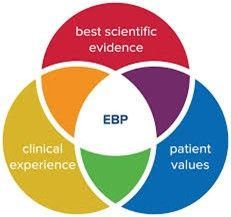5 Things Teen High-Risk Behavior Have in Common
What do teens who are at high risk have in common?
Many things. And sometimes nothing.
An 11-year-old boy on the autism spectrum bites his sister. A 14-year-old young girl spends more time with an interested young man who is trying to lure her into sex trafficking. The 15-year-old girl starts to cut herself in the bathroom at middle school.
These behaviors seem to have little in common. And they might. But what led the youths to exhibit these behaviors have much in common. They are not independent of each other.
Several behaviors are included in high-risk behaviors among youths. Such as criminal activity. Unprotected sex. Commercial sexual exploitation of children (CSEC). Aggressive behavior towards others. Or oneself. Substance use. Runaways.
This is not an exhaustive list. But these comprise the major behaviors which plague youth in children and family agencies. They occur with youths of all cultures, ethnic backgrounds, socioeconomic backgrounds, and geographic areas.
Are there ways of predicting the behavior and therefore helping to prevent them?
Perhaps.
What do these behaviors have in common? Other than they utilize 80% of the resources in an agency although they may make up 20% or less of the youth?
5 possible causes may be involved. Based upon research and observation of youths over the years, these are some similar links:
1. Medications - youths who are psychotropic medications are at the highest risk. Because they have already had problems within their childhood or teen years, and these concerns haven’t stopped. Nor have they been alleviated by traditional therapy or counseling. Seeing a psychiatrist or taking medications means that a practitioner believed at some time the problems were biochemical. And that medications would help the situation.
2. Trauma - the nature of trauma in some form leads the youth to respond to stressors differently than others. Typical youths when trouble occurs are at a calm frame of mind. The youth with trauma sees the situation from a higher state of arousal, fright, fear, anxiety, or aggression. Their responses are different based upon their history of high stress.
3. Isolation - youths who tend to stay away from others lead a more withdrawn life. Not to say that being introverted is bad; 25% of the population is this way. But when a youth doesn’t have friends, is not involved in any social clubs or groups, they are the “outcasts”. And tend to either be labeled this way and/or treated as different. Studies show when youths are labeled as outcasts, they tend to be more involved in high-risk behavior.
4. No communication - along with being isolated, some youths have no communication skills. They don’t talk about their problems, their feelings, what’s building up inside of them. Even elementary school children, when prompted, can learn to talk about their problems. When a teen or youth doesn’t feel anyone will listen, it’s a sign that they look for other ways to manage their emotions.
5. Overage - not necessarily a common term, but an overage is behavior to excess. A youth not simply being upset and breaking their pencil in class. But turning over their desk and slamming it down on the ground. Because they can’t modulate how they feel. Everything is magnified. They yell more, act out more, generally cannot contain how they feel. And as a result, they have more difficulties with others.
Seeing these behaviors in school, at home, and in the community can be warning signs of problems. And behavior health professionals can develop plans to help the youth learn new coping skills. Or deal with problems in therapy.
If you want to learn more about how Praxes’ software, Apogee, can help you with these behaviors, please contact us.




